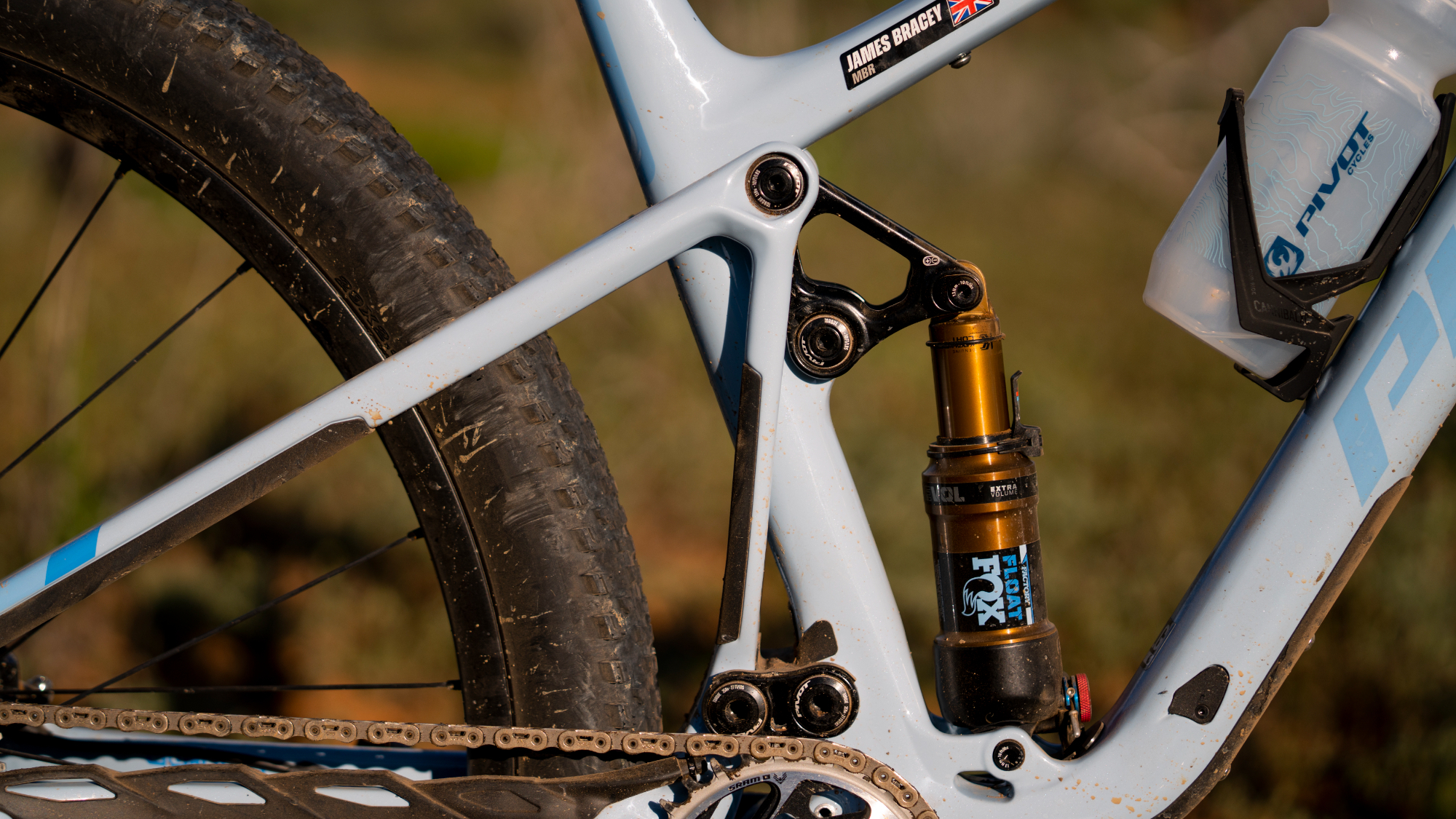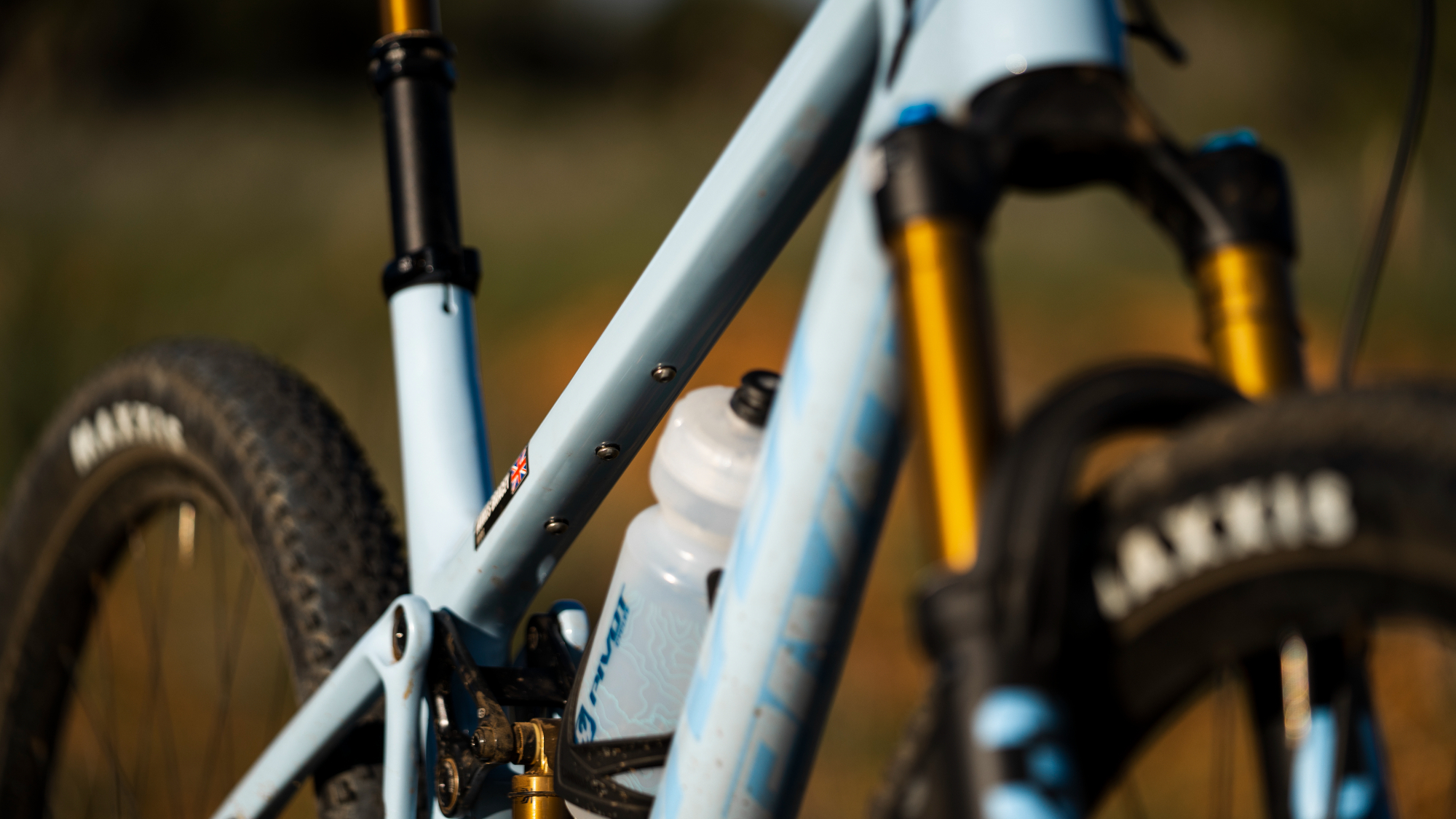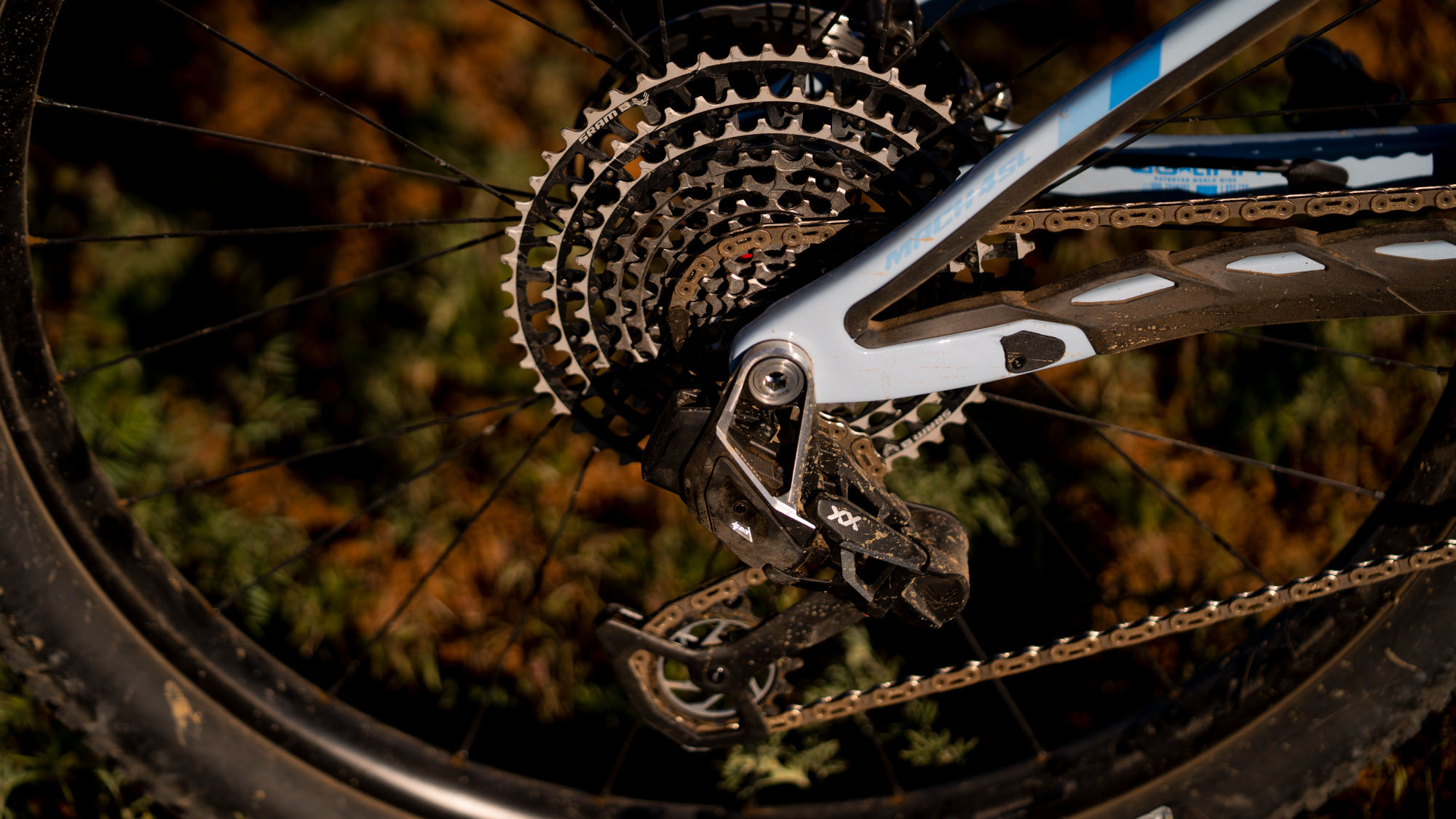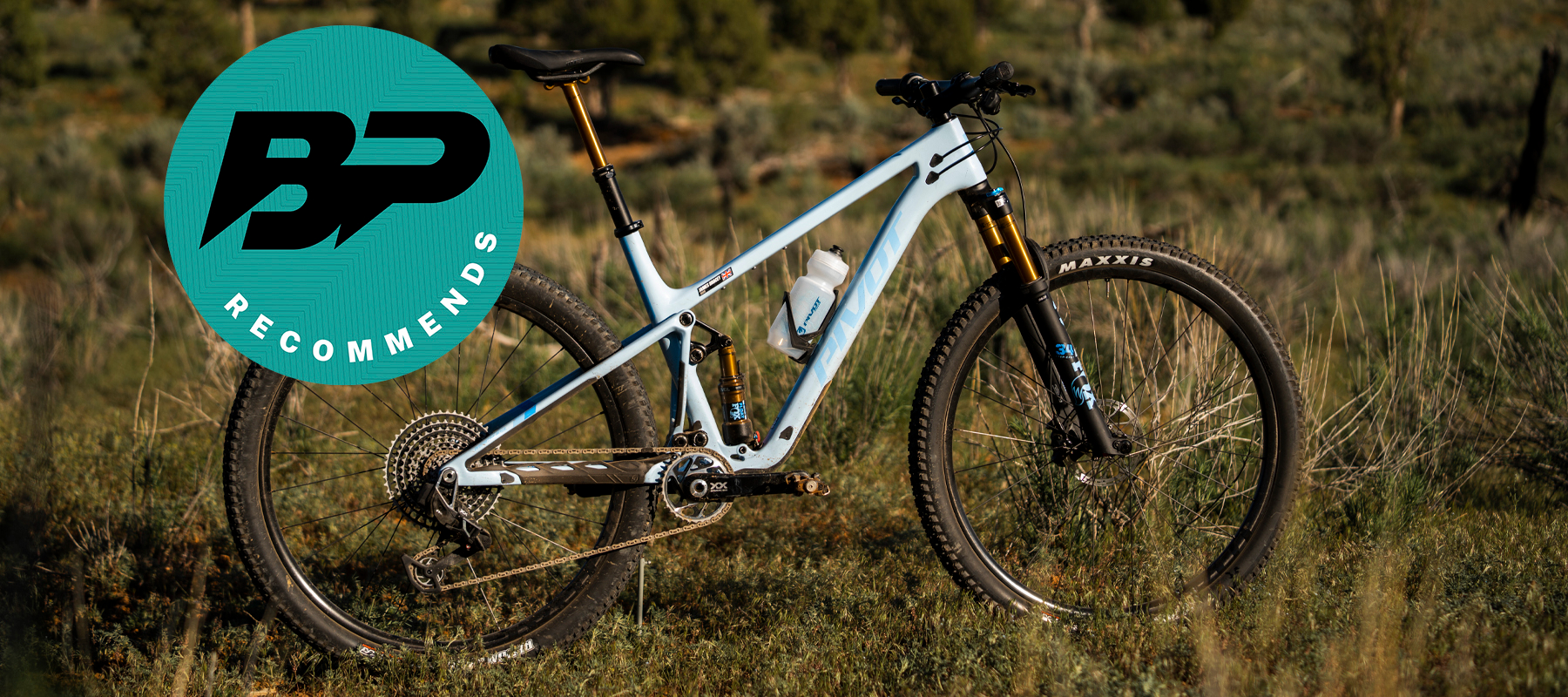Bike Perfect Verdict
The new Mach 4 SL is proof that one bike can (almost) do it all. Simply one of the most well-balanced and complete bikes for the rider who is looking for one bike to do everything fast. The clever travel adjustment completely transforms the Mach 4 SL from XC race ripper to confidence inspiring trail slayer.
Pros
- +
DW-Link suspension platform pedals like no other
- +
Wishlist component spec
- +
Handling and suspension performance
- +
Rear travel adjustment completely changes the personality of the bike
- +
Pivot’s frame construction and high tolerances are a mechanic's dream
Cons
- -
Speccing of Maxxis Rekon Race up front not ideal outside of the race course for many riders
- -
Could do with a bigger front brake rotor
- -
SRAM AXS Pod shifter ergonomics divide opinion
Why trust BikePerfect
The new Pivot Mach 4 SL has been forged under the concept of ‘challenge the threshold’, creating an XC and marathon race-oriented platform that transcends conventional limitations. To simply label it as a race machine would be an injustice, as it represents a genre-crossing tour de force that surpasses expectations.
In the realm of XC racing, weight reduction reigns supreme, and it’s this goal that drove the development process of the Mach 4 SL. Pivot's engineers rose to the challenge, achieving remarkable weight savings of up to 17 percent compared to its predecessor. Despite this focus on shedding grams, the Mach 4 SL proves to be a bike that will enchant riders who thrive beyond the race tape. Gone is the stock 100mm of rear travel. Instead, Pivot has ingeniously incorporated a travel adjust feature that ensures that you can have your cake and eat it; whether your journey commences with a starting gun or at the trailhead.
I managed to get some quality riding time over four days with the Mach 4 SL at its official launch in Cortez, Colorado; taking in the best trails the area has to offer.

Design and geometry
Put the new Mach 4 SL side by side with the current model and at first glance it’s difficult to see where the changes have taken place. The existing model was the first in Pivot’s range to switch to a vertical shock placement and the new version follows suit. Most of the changes have been in the design and construction of the new frame. Pivot claims a weight saving of up to 400 grams with the new frame. A strict diet of FEA (finite element analysis) has pared the high modulus carbon front and rear triangles to a minimum and the new frame features some of the most svelte and elegant tubing Pivot has created to date. Despite this drastic weight reduction Pivot also claims that the new frame is stiffer where it counts when compared to the existing iteration.
All bearing seats (frame, headset and bottom bracket) are machined directly into the carbon to not only save weight but also provide far better tolerances over aluminum inserts, ensuring extended bearing life in all areas. Pivot forgoes tube-in-tube cable guides, preferring open ports, as not only does this save 30g per guide but also provides better brake hose runs regardless of which side you run your brakes. There is space for two water bottles within the frame from size medium upwards, as well as an additional mounting point below the downtube. Finally, you can fit up to 2.4” tires at the rear (albeit more rounded XC style profiles).
The biggest change comes in the rear wheel travel. The new Mach 4 SL will now be available in two different frame options, each with dual travel settings. The World Cup version will be swappable between 95 and 103mm of travel and the Team/Pro/Ride versions will allow you to choose between 106 and 115mm. This ability to adjust the travel comes from the new forged 7000 aluminum upper rocker link which now features flip-chips. These can be swapped to alter the leverage ratio of the suspension kinematic effectively allowing more or less travel to be accessed from the shock. It’s interesting to note that this feature does not alter the geometry of the frame at all.
Talking about geometry, it’s had a few tweaks to make it even easier to live with and ride. All the important numbers for the large frame size I rode are listed down below (115mm setting). Pivot admits that it can be relatively conservative with its geometries, but the Mach 4 SL looks to be right in the sweetspot for a bike with its travel and intended use.
Pivot also custom tune the carbon layup dependent on frame size to try to maintain an equivalent stiffness alongside providing the XS and S frame sizes with a lighter shock tune. Even the XS frame (for 4’10” and above) is equipped with 29” wheels.

Components and build
I was lucky to ride the Team XX SL build during the launch and the level of spec was certainly befitting the eye-watering $11,599 / £12,500 price. Fox Factory level suspension was in place with a 34 Stepcast 120mm fork up front (the shorter travel World Cup build is specced with a Fox 32 Stepcast) and a 45mm stroke Float Factory shock with remote lockout. As the bike is specced with a Fox Transfer dropper post Pivot has had to resort to using a RockShox twist lockout for the shock. SRAM’s latest T-Type XX SL AXS wireless drivetrain and new Level Ultimate Stealth brakes take care of the stop and go performance of the Mach 4 SL. The 34-tooth chainring is a great match for such a fast bike. Wheels are Reynolds Black Label carbon rims with 30mm front and 28mm rear internal diameters matched to Industry Nine Hydra hubs with their unmistakable buzz. Maxxis Rekon Race tyres with EXO casing are specced front and rear although potentially Pivot might change the front to a straight Rekon when the lighter XC version arrives.
The 760mm width, 35mm diameter carbon bar is Pivot’s own alongside a 60mm alloy stem. The saddle is a Pivot branded WTB Volt with carbon rails. Pivot had specced the Mach 4 SL with SRAM grips (to match the twist lockout), but I didn’t get on with these over Pivot’s own superb offerings.

Ride and performance
One aspect of the ride of the Mach 4 SL that became apparent very early on is just how balanced and neutral the handling felt. I was able to jump on the Mach 4 SL and immediately feel like I’ve been riding the bike for years. It’s sometimes difficult to really get a grasp of a bike’s character when riding very unfamiliar trails and surfaces. The sand and rock of Colorado, where I managed to get three days aboard the new machine, is quite literally a world away from my normal home trails, but the Mach 4 SL made the twisty and flowy trails feel like second nature. It feels clichéd to say the bike boosted confidence, but it really could take everything in its stride.
Let go of the brakes and it was as good a point and shoot machine as some of the more trail focused downcountry bikes I’ve ridden, despite being lighter and with less travel to play with.
Pivot's unwavering dedication to creating a suspension kinematic that aligns with the Mach 4 SL's purpose is evident in their meticulous engineering. This bike is built to excel in high-speed riding and relentless pedaling. It's important to note that despite being equipped with a rear shock lockout, the Mach 4 SL rarely required its engagement, a testament to the bike's inherent performance.

In sharp contrast to many XC race-oriented bikes I've ridden, the Mach 4 SL defies the typical characteristics of lightweight machines that often exhibit nervous handling traits. Pivot often errs on the side of caution when it comes to its geometry numbers but the reach of the large frame size I rode, along with the well-considered bar width, and stem length of the Mach 4 SL felt nearly perfect. This optimized setup allowed me to push my limits, riding as fast and hard as my confidence would allow. Regardless of the terrain, it’s impressive how the Mach 4 SL instills unwavering confidence, despite having such a small amount of travel. The suspension curve provides plenty of sensitivity in the initial part of the stroke, plenty of mid-level support when pushing hard on the pedals, yet delivers full travel in the longer setting without it feeling like you’re smashing off the bottom out stop with every hit. It handles rocky ledges and steep, loose trails with the poise and stability of a bike with much more than its 115mm of travel. This exceptional performance is further complemented by the sensibly specced Fox 34 Stepcast fork, a favorite among racers (including myself). The only aspect I found fault with was the choice of a 160mm rotor at the front. Given the Mach 4 SL's impressive speed capabilities, especially on UK trails, I would have preferred a 180mm rotor. Even for XC racing, the larger rotor would reduce fatigue and enhance speed.
The switch to the shorter travel setting by adjusting the linkage flip-chips had an astonishing effect on the bike's personality, unlike anything I've experienced before. The easygoing trail bike demeanor vanished, replaced by a snarling XC race machine. The change in shock leverage dramatically increases the progression, effectively preventing the shock from achieving the full stroke. This change in character was instantly felt through the pedals where it felt almost as taught as a hardtail. It’s important to note that the initial shock leverage curve remains unchanged, eliminating the need to adjust pressure/sag when switching between modes. Power transfer feels seamless, seemingly unaffected by the switch, allowing me to conquer gradients with less effort. In both travel settings, the Mach 4 SL delivers exhilarating handling performance. On the roller coaster trails of Phil's World, Cortez’s local trail network, it responded to inputs with lightning-fast precision. Pushing the limits of the Rekon Race rear tire around corners was a thrilling experience, and one that was also helped by the stiffness of the frame and wheels. It also excels in getting airborne, with its front end effortlessly lifting faster than most bikes in its class. However, on steep technical climbs, the light front end did present some challenges in keeping it grounded. After playing around with the spacers (Pivot provides a generous spacer stack) I ended up dropping the stem by 15mm. In this position the bike achieved a well-balanced feel without sacrificing the fun factor.

Verdict
If you are looking for a bike that is as equally at home in an XCO race, ultra-distance marathon or even chasing trail centre KOMs, the Mach 4 SL should find a spot high on everyone’s wishlist. It pedals better than almost any of its rivals in the category and the handling prowess will make even the most ordinary rider feel as good as Nino Schurter or Jolanda Neff.
It’s hard to see past the price tag for this particular model, but Pivot’s attention to detail and quality of construction goes a long way towards justifying it. There are more realistically specced bikes in the range that feature the same frame as the Team XX SL, but be aware that not all models are going to be available in all regions.
Test conditions
- Terrain: Varying, ranging from loose sand, loamy trails through hardpacked gravel and bedrock slabs
- Conditions: All weathers! From dry and dusty to thunderstorms.
- Temperature: from 50 to 73ºF / 10 to 23ºC
Tech specs: Pivot Mach 4 SL Team Eagle XX
- Bike type: Cross-country
- Price: $11,599 / £12,500
- Frame: Carbon, 106-115mm travel
- Fork: Fox Factory Stepcast 34, FIT4, 44mm offset, 120mm travel
- Shock: Fox Factory Float w/remote lockout (190x45mm stroke)
- Head tube angle: 66.9 degrees
- Seat tube angle: 75.3 degrees
- Reach: 462mm
- Weight: 11.2kg (24.74lb) (size large)
- Drivetrain: SRAM XX SL 34T chainset SRAM XX SL AXS derailleur, SRAM AXS Pod Ultimate shifter, SRAM XX SL 10-52T cassette
- Brakes: SRAM Level Ultimate Stealth 2-piston 160mm f+r
- Wheels: Reynolds Black Label, Industry Nine Hydra hubs, Reynolds carbon 30mm width (f) 28mm width (r) rims
- Tires: Maxxis Rekon Race, TR EXO 29x2.4”
- Seatpost: Fox Transfer 150mm
- Saddle: Phoenix WTB Volt Carbon
- Stem: Phoenix Team XC/Trail 60mm
- Rival products: Scott Spark WC, Specialized Epic/Epic Evo

Having received my first proper mountain bike (a Raleigh Montage) in 1988, I’ve pretty much been hooked on two-wheels ever since. In those days, and to this date, cross-country racing has been my thing and I’m pleased to say I’ve enjoyed some relative success. But over the past 35 years immersed in cycling, I pretty much ride and race everything from BMX to enduro, alongside skinny wheeled stuff like road, cross and gravel.
My bike industry experience spans years working in bike shops, covering everything from wrenching to being a bike fit specialist, and includes six years as a bike tester and senior tech writer for both MBR and Cycling Weekly.

